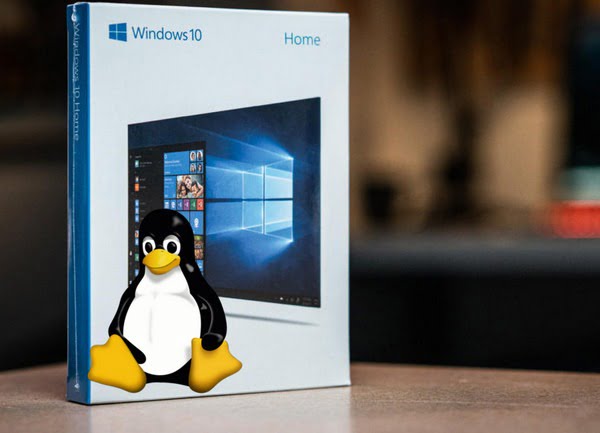Windows subsystem for Linux is a great utility. It lets you run a Linux distribution side-by-side with Windows. Most of the command and utilities are usable. WSL creates a compatible environment to run Linux in Windows.
In this environment, you can run Linux apps, programs, or utilities. It also lets you run the Linux command line. Therefore, what is the Windows system in Linux [WSL] can do or how to use it. We are here to find answers to these questions. So let us get started.
What is Windows Subsystem in Linux [WSL]
As I said earlier, the WSL lets you run Linux on Windows. A great utility that saves you time. You do not need to install Linux in dual boot with Windows. It is a good option to run Linux on your PC. However, in dual boot, you will need to switch from one OS to another. You can’t run both OSs simultaneously.
This problem is solved with the virtual machine. You can simulate a Linux OS with a virtual machine. However, it consumes a lot of resources. Nevertheless, no need to worry. All of these problems have solutions, the Windows subsystem in Linux [WSL]. You can run Windows and Linux side-by-side and it doesn’t consume many resources.

WSL runs the Linux binary natively on Windows 10. You can run everything natively on Windows 10. There is no need for porting. You just need to install WSL. Then you can go to Microsoft store and install a Linux distribution you like. WSL makes it simpler and time-saving. There are two major versions of the Windows Subsystem in Linux. These are WSL1 and WSL2. So let’s find out what are these versions. Moreover, which one is better for you.
you may also like: How to Check How Much RAM You Have in Windows 10
What is WSL1
WSL1 is the first version of the Windows subsystem in Linux. It is a compatibility layer to run Linux on Windows. WSL1 converts Linux system call to Windows system call and execute them. WSL 1 is a great utility. However, it isn’t perfect. It doesn’t support full system calls which might lead to compatibility issues.
WSL 1 doesn’t use virtualization technology that affects performance. It doesn’t have full kernel support which again causes compatibility issues. Nevertheless, there are more advantages than disadvantages. It is a great utility and future versions will be more efficient. None of these issues is problematic. WSL 1 is still faster than VMs and better than the dual boot. You should give it a try.
What is WSL2
WSL 2 is a different story. It was announced with Microsoft build 2019. WSL 2 integrates a full Linux kernel inside Windows 10. It also supports Hyper-V that helps to improve performance in the Linux app. It comes with better compatibility for Linux programs.
All these features make WSL 2 a great improvement over WSL 1. However, it is in the development phase. It is only available in Windows insider builds. These insider builds are not stable and not suitable for normal users. WSL 2 will come included in future builds of windows. Nevertheless, you need to wait for it or you can go with WSL 1.

you might also like: How to Install Linux in Dual Boot With Windows 10
How to install the Windows Subsystem in Linux in Windows 10
Installing WSL is easy. Follow these steps ad you are good to go.
- First, open control panel.
- Search for the option “turn windows feature on and off”.
- A new window will open.
- Here search for windows subsystem in Linux.
- Click on the checkbox on the right side.
- Now click Ok. WSL will be installed shortly.
Make sure you have an internet connection.
Installing WSL via command line.
- Open a command prompt with administrative access.
- Put this command and click enter.
dism.exe /online /enable-feature /featurename:Microsoft-Windows-Subsystem-Linux /all /norestart
- Wait for a few seconds.
Done! You are all set now.
How to use WSL
WSL is just a layer that enables you to use Linux in windows. After installing WSL you just need to select a Linux distribution to run.
- First, open Microsoft store.
- Here search for Linux distribution you want to run.
- Search and download it.
- After downloading, you can launch it. There will be an icon in the start menu.
Done! You are all set to use Linux in your windows machine.
Wrapping Up!!
Windows subsystem in Linux or WSL lets you run Linux on Windows. The VMs are difficult to set up. They also use a huge chunk of resources. Dual boot is also an option. However, it’s hassling to switch between different operating systems. Therefore, WSL is the latest and greatest way to run Linux in windows. So go ahead and try it.
What exactly is the Windows Subsystem in Linux and how can I use it?
You can run a Linux file system, along with Linux command-line tools and GUI apps, directly on Windows, alongside your traditional Windows desktop and applications, thanks to a feature of the Windows operating system called the Windows Subsystem for Linux (WSL). This feature is referred to as “Windows Subsystem for Linux.”
Is it a good idea to use Windows Subsystem in Linux?
People who are completely unfamiliar with Linux may find that WSL is the best way to start learning about it. They may get used to using Linux commands without having to completely install a new operating system on their computer. The Windows Subsystem in Linux may be installed with only a few mouse clicks from the Microsoft Store. This will also make it easier for people to go over to using Linux.
Is WSL a more capable platform than VM?
Choose the virtual machine option if you want to utilise the systems individually or as part of a network. Utilize Windows Subsystem in Linux (WSL) if you wish to quickly run Linux commands on your Windows system (to really modify the files on your Windows computer).
How can I install the Windows subsystem on my Linux computer?
Open the Control Panel, select Programs and Features, and then click Turn Windows Features On or Off on the left side bar under Programs. This will activate the Windows Subsystem for Linux (Beta). Click the OK button once you have enabled the Windows Subsystem in Linux (Beta) item in the list.
Related Articles:
- How Much is $1 in Robux? [Explained]
- 8 Ways to Fix Discord Screen Share Audio not Working
- How to View Passwords on Mac – Step by Step
- How to Install Bluetooth Driver in Windows 10
- How To Close Amazon Account – Step by Step Guide
- How To Share Google Map Location
- How to Turn on Google Assistant On Any Device
- How To Cancel NetFlix on iPhone – Step By Step
- How To Call Someone Without Showing Your Number